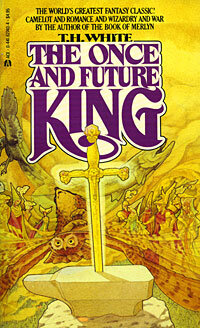
T.H. White’s 1958 novel is a must-read for all. The book follows the journey of a kingdom with dictators and soldiers that inspired your childhood bedtime stories about King Arthur and the wizard, Merlyn. The characters and plot were based on older novels and true events in history. The entire novel includes five shorter “books” filled with themes of knights, war, lost love, and unraveled secrets.
The first book called “The Sword in the Stone” also inspired the Disney adaption of the story. This book creates the setting for the entire journey and introduces the unknown future king, Arthur, as a young boy living as a peasant. Arthur learns, loves, hurts, and goes through multiple obstacles to find his inner truth.
Personally, the story stuck to me because of its well-thought plot and storyline that makes you feel like you are a part of its world. The story strikes you especially when you realize that the destiny of the characters was already written and known (by Merlyn) since the very first chapter of the book. For this reason, it feels overwhelming when you finally finish the novel and think of the different ways it could have ended.
White’s themes in The Once and Future King accurately apply in today’s world, despite the time between the book’s publication and now in the twenty-first century. This novel not only shows development in its characters but also within the reader.
Although this novel is recommended to be read by young adults, anyone eager enough to gain a higher understanding of the world can read it. Personally, The Once and Future King has stayed with me since I read it for my English class five years ago. Hopefully, the future readers of this novel come to love it and cherish it as much as the past readers have.
-Zohal N.
The Once and Future King by T. H. White is available for checkout from the Mission Viejo Library.


